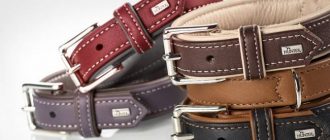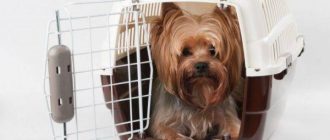In a pet with a problematic health, the stomach has become too big, as if inflated? Perhaps the cause of ascites is the accumulation of fluid in abdominal cavity. In a different way, this problem is called abdominal dropsy. Is ascites in a dog dangerous? Yes, of course, without timely medical assistance, the animal may simply die from respiratory or heart failure. But even if before death things won’t come, fluid in the abdomen will noticeably worsen quality dog’s life. In this article we will try to figure out how in time to detect an ailment and is it possible to cure ascites in a dog.
Causes of abdominal ascites in dogs
Contents
Dog abdominal ascites never appears on an empty place, because it is not an independent disease. Dropsy the abdomen is a complication of any serious illness. Because treatment will directly depend on the correct definition of the main illnesses. Most often, the “culprits” of ascites are:
- Tumors of the abdominal cavity;
- Peritonitis;
- Low levels of blood proteins (hypoalbuminemia);
- Cardiac and respiratory ailments;
- Diseases of the liver and kidneys;
- Obesity / exhaustion;
- Parasite infestations;
- Peritoneal injuries.
Signs of abdominal dropsy
Inexperience, some owners confuse ascites with pregnancy. BUT in obese pets, a bloated abdomen is considered a symbol of overeating. Gases are sometimes blamed for bloating. However, distinguish ascites from “interesting” position, obesity and increased gas can. To be on time to help on time is worth knowing everything symptoms of ascites in a dog that accompany fluid congestion in peritoneum:
- The dog’s belly in girth is huge. The surest sign of ascites. The amount of accumulated fluid in some cases can reach 15-20 liters! Moreover, fluid movement is well traced. inside the dog’s abdomen if she changes her pose (if the doggie, for example, standing, the stomach is pulled down, and in the supine position it sticks out from both sides evenly);
- Weight gain (due to fluid accumulated in the peritoneum);
- Stool and stomach disorders, nausea;
- The unnaturalness of poses during rest, distortion of gait during walking time (the dog is simply uncomfortable to lie, sit or run with huge belly);
- Dullness of a fur coat;
- Worsening of appetite (often dogs with ascites look haggard, although their stomach is inflated like a ball);
- Apathy and weakness;
- Difficulty breathing;
- Tachycardia;
- Fever;
- The shade of the mucous membranes is cyanotic or icteric;
- In the most severe cases, the animal may fall into a coma.
How to determine if a pet has ascites
Although signs of ascites can almost always be seen with the naked eye, you can’t do without a visit to a specialist. At the clinic veterinarian First, examine the dog, and then conduct a series of studies, among which will be:
- Urine and blood tests
- X-ray / ultrasound of the abdominal cavity (if necessary and lungs);
- Puncture for taking intra-abdominal fluid;
- Echocardiography of the heart.
Dog ascites treatment
Is it possible to treat ascites in dogs at home without resorting to doctor’s help? No, in no case to deal with dropsy folk remedies will not succeed. Only hurt yourself selected pills. Only a competent specialist can help the dog, having completed the following stages of therapy:
- Removing fluid through a puncture;
- The introduction of diuretics (“Diacarb”, “Dichlothiazide”, Furasemide or other medicines recommended veterinarian);
- Cardiac preparations (Cordiamin, Caffeine, Sulfocamphocaine or other);
- Infusion of isotonic solution during dehydration;
- Connection to the oxygen chamber for breathing problems;
- Blood transfusion;
- Administration of antibiotics for suspected infection.
In addition to the listed drugs, the dog is administered those drugs that aimed at eliminating the main cause that caused ascites (to for example, with renal ailments, antispasmodics will be required, and with worms – deworming, etc.). In addition to drug treatment dogs with ascites are prescribed a light diet. Main products nutrition for dropsy of the abdominal cavity – lean cooked meat, cereals, fresh low-fat kefir, boiled and chopped vegetables (except cabbage, turnips, radishes). All products will have to be completely eliminated. provoking thirst (sausages, everything that contains pepper and salt, sour cottage cheese, sweets), any fatty foods (meat, “milk”). If the animal is accustomed to purchased food, it is better to give preference for high-quality, high-protein foods (e.g. brands “Akana”, “Origen”, etc.). Can translate caudate sufferers for special medicinal food depending on ascites disease (e.g. for core dogs “Royal Canine Cardiac” is suitable, but for animals with a problem liver – “Farmina Vet Life Dog Hepatic”, etc.).
What are the chances of full healing
Any owner who has experienced abdominal dropsy Pet, probably interested in how many dogs live with ascites. The prognosis will directly depend on the cause of ascites, and also from the condition of the animal (how many unpleasant symptoms concomitant with accumulation of fluid). If an elderly dog, for example, fluid inside the peritoneum has accumulated due to cirrhosis of the liver or failed kidneys – this is the verdict in most cases, unfortunately. However, young and strong dogs are able to recover from ascites. with timely treatment. There is every chance of a full recovery, if ascites was caused by worms, injuries or overweight. Moreover, great responsibility lies with the owner, because the sooner the dog is in the hands of the doctor, the better. Because at the slightest suspected ascites, it is important to get to the veterinary clinic as soon as possible.






